Most Polluted Cities In The World: Air pollution is a worldwide problem, and certain towns have achieved recognition for having some of the world’s worst air quality. Industrialization, traffic emissions, geographical factors, and insufficient pollution control methods all contribute to the high levels of pollution in these cities.
The negative effect of poor air quality on human health and the environment emphasizes the need of tackling this problem and developing long-term solutions for cleaner air.
Recommended: Hardest Musical Instruments To Play and Learn
Top 10 Most Polluted And Contaminated Cities In The World
1. Ghaziabad: The high pollution levels in Ghaziabad may be due to a number of things. Rapid urbanization, industrial expansion, traffic pollution, building activity, and geographical considerations such as its closeness to highly industrialized places like as Delhi and Noida are among them.
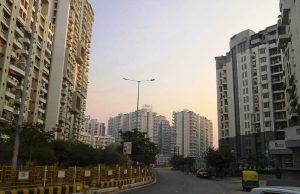
Weather circumstances, such as temperature inversions, which trap pollutants close to the ground, can have an impact on the city’s air quality. Furthermore, the absence of proper waste management and green cover aggravates the pollution issue. Overall, these issues lead to Ghaziabad’s status as one of the world’s most polluted cities.
2. New Delhi: New Delhi’s reputation as one of the world’s most polluted cities may be ascribed to a variety of complicated variables, including the city’s high vehicle density, which includes a considerable number of older automobiles that do not fulfill contemporary emission requirements. This greatly adds to air pollution. Again, Delhi is an industrial powerhouse with a plethora of manufacturing plants and companies.
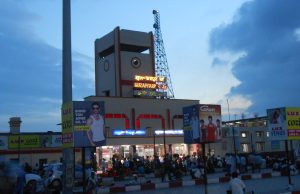
Many of these sectors may lack strict pollution control systems, resulting in the discharge of pollutants into the atmosphere. Rapid urbanization and continuous building projects discharge dust and particulate matter into the sky, causing air quality to deteriorate even more. It is undeniable that Delhi’s geographical position, in conjunction with its terrain and weather patterns, may result in temperature inversions that trap pollutants close to the ground. This keeps pollutants from dispersing and raises pollution levels. Because of the city’s big population, there are more emissions from numerous sources, making pollution management more difficult.
Also see: How to become a successful lawyer
3. Muzaffarpur: Muzaffarpur, a city in the Indian state of Bihar, has had substantial pollution problems owing to a variety of causes. It has had pollution concerns that have drew notice. One of the possible causes of its pollution problems is that Muzaffarpur and its neighboring areas are predominantly agricultural. Burning agricultural wastes after harvest, which is prevalent in many regions of India, emits considerable quantities of particulate matter and pollutants into the air.
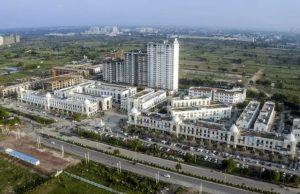
Again, rapid industrialisation and insufficient pollution control measures result in dangerous pollutant emissions from industries operating in the vicinity. The geographical and climatic factors of Muzaffarpur might have an influence on pollution levels. Pollutant dispersal may also be influenced by factors such as weather patterns and geography.
4. Faridabad: Faridabad, a city in the Indian state of Haryana, has been identified as having serious pollution problems. It has had significant pollution difficulties owing to a variety of causes. To begin with, Faridabad is an industrial city with a high density of manufacturers and manufacturing units. These businesses may produce a variety of pollutants, such as particulate matter, gases, and chemicals, all of which contribute to air pollution.
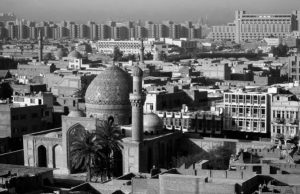
Faridabad, like many Indian cities, has a significant degree of automotive traffic. Pollutant emissions may be increased by using older cars with poor emission controls and a lack of effective public transit. The city’s location and terrain might have an impact on its air quality. Because to its closeness to the National Capital Region (NCR) and other industrial areas, pollution from neighboring regions may be transported to Faridabad.
Also see: Programming Languages To Learn For Cyber Security
5. Baghdad: Baghdad, Iraq’s capital city, has had considerable pollution difficulties, contributing to its reputation as one of the world’s most polluted cities. Several causes contribute to the city’s poor air quality. Years of violence, including wars and instability, have caused major damage to infrastructure, including power plants, water treatment facilities, and waste management systems, at the top of the list. Pollution levels have risen as a result of this.
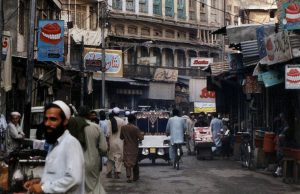
Frequent power outages and a lack of a dependable power source have increased dependence on backup generators, which often use lower-quality fuels and lack sufficient pollution control systems. Heavy automotive emissions occur from high levels of traffic congestion mixed with a lack of adequate public transit. Older automobiles with out-of-date pollution controls aggravate the situation.
6. Peshawar: The Pakistani city of Peshawar has been noted for its severe air pollution problems. Several causes contribute to its status as one of the world’s most polluted cities. Peshawar is obviously surrounded by hills that may trap pollutants, resulting in poor air circulation and elevated pollution levels.

The city’s dense population and growing number of automobiles lead to high levels of vehicular emissions, which include pollutants such as nitrogen dioxide and particulate matter. Peshawar is also an industrial centre, with a variety of manufacturing and industrial operations. Many of these businesses may lack efficient pollution control systems, resulting in the discharge of pollutants into the atmosphere.
Also see: African Countries With the Most Beautiful Women (With Pictures)
7. Dhaka: Dhaka, Bangladesh’s main city, is often mentioned as one of the world’s most polluted cities owing to a combination of factors leading to poor air quality. Dhaka is one of the world’s most densely inhabited cities, with a fast expanding population. Because of the large concentration of people and activities, emissions from automobiles, industry, and houses grow.

Notably, transportation congestion in the metropolis contributes significantly to air pollution. Many automobiles, particularly older ones, often lack sufficient pollution control equipment. Manufacturing and textiles are among the industries of Dhaka. Some of these businesses may not have strict pollution control systems in place, resulting in the discharge of pollutants into the environment.
8. N’Djamena: N’Djamena, Chad’s capital city, has come to be known for its severe pollution problems, making it one of the world’s most polluted cities. A number of issues have been highlighted as contributing to the city’s poor air quality.
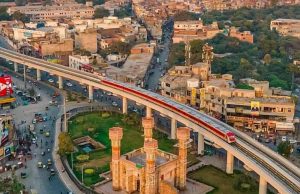
To begin with, it is obvious that rapid urbanization and population expansion often outstrip infrastructure development and planning, resulting in increasing pollution from automobiles, industries, and building activities. The geographic position of N’Djamena, together with weather circumstances, may impact pollution dispersion and lead to poor air quality.
Also see: 15 Factors That Determines the Speed of a Phone
9. Hotan: Due to a mix of causes, Hotan, situated in China’s Xinjiang province, is often recognized as one of the most polluted cities in the world. The high dependence on coal for electricity production and heating, which emits a substantial quantity of pollutants and particulate matter into the air, is one of the primary factors to its severe pollution. Rapid industrialization and urbanization in the city have resulted in increasing emissions from industry, cars, and building activities, worsening air quality.
Geographical variables are also important. Hotan is located in a basin surrounded by mountains, which may trap pollutants and generate stagnant air conditions, inhibiting adequate pollution dispersion. This condition, known as an inversion layer, exacerbates pollution deposition in the region. Furthermore, the region’s dry environment and sparse flora make natural air purification challenging. Inadequate waste management and sewage systems may also lead to the discharge of contaminants into the environment.
10. Lahore: The high levels of pollution in Lahore may be ascribed to a variety of sources. One major factor is increased vehicular emissions as a result of a fast rising population and more automobiles on the road. Industrial operations, such as brick kilns and factories, also substantially contribute to air pollution.
Furthermore, the city’s physical setting, which is surrounded by hills that trap pollution, aggravates the situation. Crop burning in surrounding agricultural areas during particular seasons harms air quality much more. Pollution is further exacerbated by poor waste management and a scarcity of green places.
Recommended: Requirements To Study Law In Ghana For All Students
Finally, the prevalence of extremely polluted cities throughout the globe emphasizes the critical need to address the negative impacts of air pollution. Poor air quality has effects that go beyond the immediate environmental impact, impacting public health and general quality of life. Pollution reduction efforts must include a mix of tougher legislation, greener energy sources, better urban design, and more public awareness. We can pave the road for healthier, more sustainable urban environments that benefit both current and future generations by taking strong action to decrease pollution.

Edeh Samuel Chukwuemeka, ACMC, is a lawyer and a certified mediator/conciliator in Nigeria. He is also a developer with knowledge in various programming languages. Samuel is determined to leverage his skills in technology, SEO, and legal practice to revolutionize the legal profession worldwide by creating web and mobile applications that simplify legal research. Sam is also passionate about educating and providing valuable information to people.